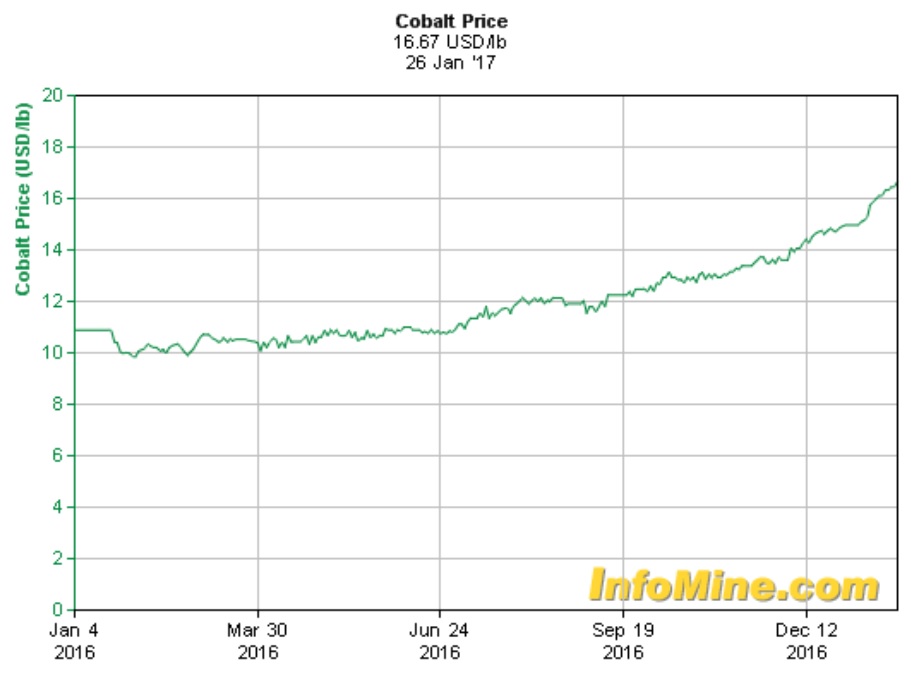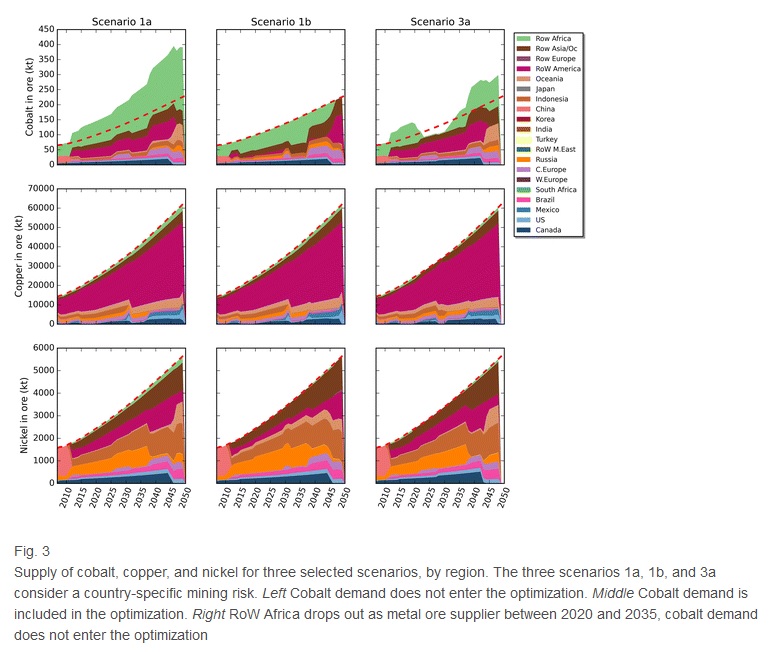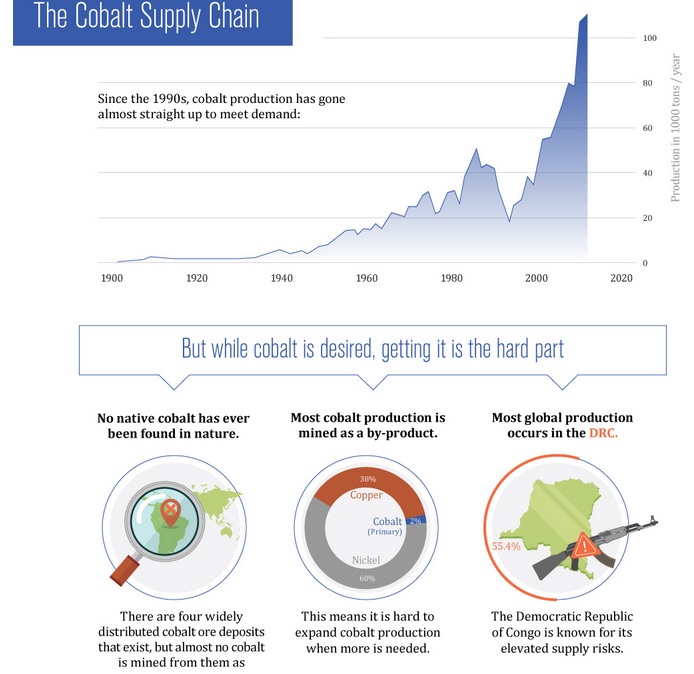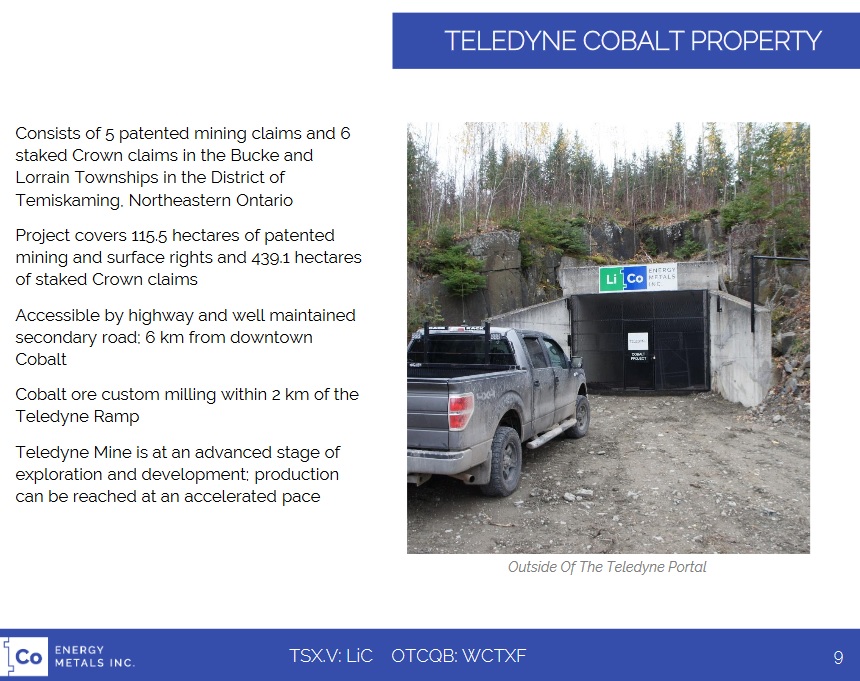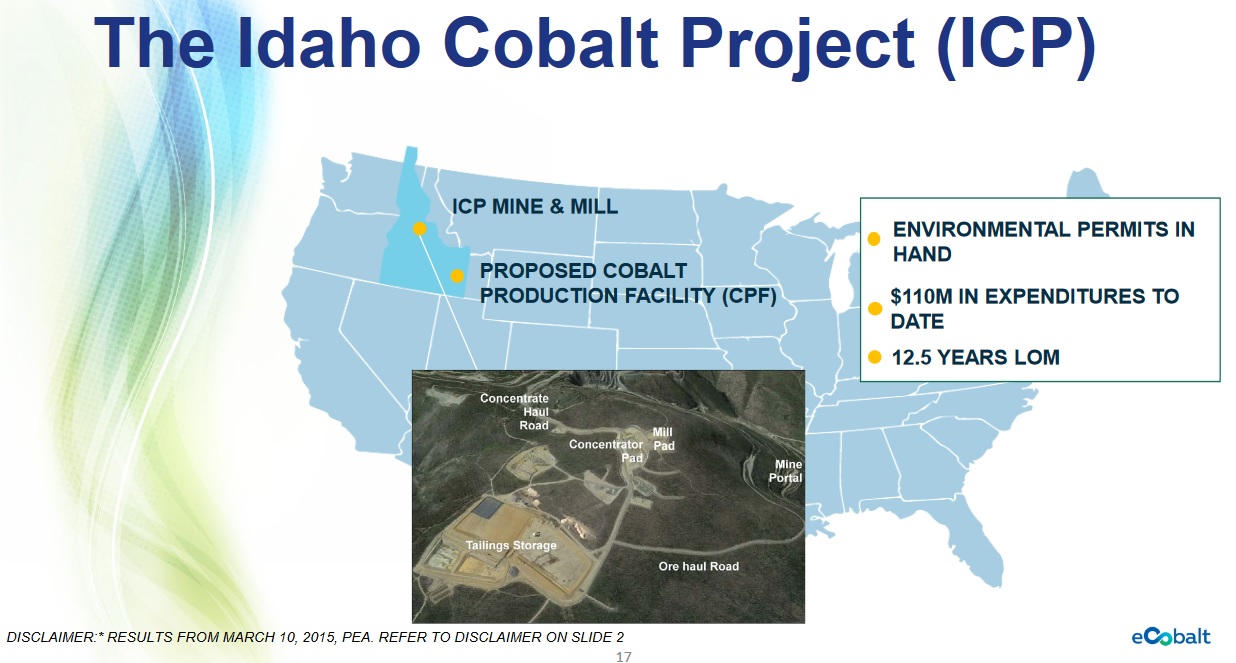A Burgeoning Bull Market? 3 Cobalt Stocks Worthy of Investigation…
Jan 28

“You can’t connect the dots looking forward; you can only connect them looking backwards. So you have to trust that the dots will somehow connect in your future.”
-Steve Jobs
Following the wise words of a visionary like Jobs, before peering into the future and envisioning what could become an insatiable demand for Cobalt we must look to the past.
What is Cobalt? And where did it come from?
According to Wikipedia, Cobalt is a chemical element with symbol “Co” and atomic number 27. Cobalt-based blue pigments (Cobalt blue) have been used since ancient times for jewelry and paints.
Like nickel and copper, Cobalt is found in the Earth’s crust only in chemically combined form, except for small deposits found in alloys of natural meteoric iron.
Known as just a silver-gray metal since 1735, it wasn’t until the turn of the twentieth century (1907 to 1913), thanks to the work of Elwood Haynes (an American inventor, metallurgist and automotive pioneer) that Cobalt begins to be used as a suitable metal in the forming of Cobalt-chromium alloys. This important alloy was and is characterized by high strength and pronounced strain hardening.
As the 1930s roll in Cobalt alloys are more widely used in construction because of excellent corrosion resistance.
Fast forwarding to today, over a period of 282 years Cobalt has evolved from merely a metal into a “special and critical” metal required for manufacturing advanced technologies like jet engines and lithium-ion batteries.
Recognizing a great opportunity…
Some people can and some people can’t.
Take Peter Buffett for example, Warren Buffett’s son.
When Peter was 19 Buffett blessed him with an inheritance in the form of Berkshire Hathaway (NYSE: BRK.A) stock, about $90,000 worth (or $250,000 worth today). A good chunk of change however we break it down.
At the time Buffett said: “Here is what you are getting. You can do whatever you want with it but there’s not going to be any more.”
What do you think young Peter did when he got his hands on what would become the best performing stock of all time?
…go on, take a guess.
He sold it! And spent the cash on music equipment! Had Peter recognized the opportunity and held onto his Berkshire stock $90 thousand would have turned into more than $75 million, like magic!
But hindsight’s 20/20.
Perhaps Buffett should have given Peter more information about what the gift represented, but after reading his biography “The Snowball”, I know his parenting methods were, how should I say this— standoffish. Buffett would lock himself in the office for days at a time researching businesses and industries.
Bottom line, Buffett wasn’t the world’s most hands-on dad, but he did become known as the world’s greatest investor (which isn’t a bad consolation prize).
Ultimately, those thousands of hours spent studying and pondering helped him see things that others couldn’t see, and capitalize on that vision.
I hope you didn’t mind that little story about Peter and Warren Buffett, but I wanted to share it with you because there are a few valuable lessons within it (one being the power of compound interest).
The billion dollar question is…
Could there be a Berkshire Hathaway-like opportunity buried within the “special and critical” metals industry just waiting to be discovered?
Heck, albeit we’d both be thrilled to uncover a stock that does a fraction of what Berkshire did.
Now I’m no Warren Buffett, but after locking myself in the office for many hours to read articles and academic journals, in addition to talking with industry experts, I’d like to think I’ve learned a few things about Cobalt. And I’m happy to share my findings with you, so if you’ve stuck with me this far, congratulations! Almost all the great stock pickers of the world have a voracious appetite for knowledge and a willingness to read. Therefore, if you wouldn’t consider yourself a great investor just yet, you’re definitely on the right track so stay the course!
Getting back to the business of Cobalt, arguably the most important “special and critical” metal…
5 of my big picture findings regarding Cobalt are below:
1. By 2020, it is expected that 75% of all lithium-ion batteries will contain Cobalt. Why’s that? It’s because Cobalt is the most important metal for increasing the energy density of lithium-ion cathodes.
2. The United States has depleted its stockpiles of Cobalt and is almost completely dependent on politically unstable countries such as the Democratic Republic of Congo for supplies. In fact, the entire world depends on politically unstable countries for more than half of its Cobalt needs.
3. Cobalt prices increased 60% last year, from $10 to over $16 per pound. Strangely enough, this new bull market has received almost no coverage from the mainstream financial media.
4. A growing list of modern and advanced technologies rely on Cobalt, but as of now there is no great alternative.
5. Approximately 22 kilograms of Cobalt are inside one “Tesla Model S”. Bloomberg’s New Energy Finance group forecasts more than 300 million electric vehicles (EV) will be on the road by 2037.
Assuming each EV needs 22 kilograms, like a Tesla Model S does, we would need 6.6 billion kilograms of Cobalt to be mined between now and then.
Herein, the question becomes…
Is there enough Cobalt to meet ever-increasing demand?
First off, it’s important to realize more than 90% of all Cobalt production is a byproduct of mining nickel and copper.
Therefore, the overall supply of Cobalt tends to rise and fall with the price of nickel and copper. When the price of those metals are up miners extract as much as they can, and Cobalt production rises. Conversely, when the price of nickel and copper is low miners extract less, and Cobalt production decreases.
The image below is very busy, and honestly, I had a difficult time interpreting the charts, but overall it provides some insight into which countries are the dominant producers and how a shift in production affects the supply of Cobalt.
As far as I can tell, from the image above, the supply of Cobalt changes significantly between the three scenarios with the different contributions from each region, but there isn’t much change in the regional pattern for nickel and copper supply.
According to the study referenced which you can read here, Cobalt recovery rates from nickel and copper production vary between 25% and 80% depending on deposit type. Assuming an average recovery rate of 60%, the authors anticipate Cobalt supply will be sufficient to meet demand going forward.
Is Mr. Market waking up to the fragile supply-demand situation for Cobalt?
That said, supplies of this “special and critical” metal, a necessity for electric vehicles and lithium-ion batteries, can be constrained for reasons such as political instability, anti-mining policies, and trade restrictions. Additionally, supplies could be constrained by a lack of mineral resources and a mismatch between demand and available production capacities.
At any moment, a drop-out of one major African Cobalt supplier could swing the supply-demand equation into a deficit virtually overnight. Perhaps Mr. Market is waking up to this fragile situation and will continue bidding up the price of Cobalt. Historically speaking, the high is over $50 per pound, so while prices are up 60% year over year, at $16 they’re still closer to a valley than the peak.
Given the “need” for this “special and critical” metal required for jet engines, lithium-ion batteries and electric vehicles, just to name 3 things that are kind of important, my gut tells me– you should be acquiring stocks that offer exposure to Cobalt.
In my view, savvy speculators will be overjoyed for the opportunity to buy the best of the best Cobalt assets into any weakness for years to come.
In the 1,254 words above and 6 images above I hope to have provided you with a solid foundation of knowledge regarding Cobalt that you can build from. Below you will find 3 Cobalt related stocks worthy of further investigation.
1. LiCo Energy Metals (LIC, TSX-V)
Located in mining-friendly Ontario, LiCo has an option in place to acquire the Teledyne Project, one of the few high-quality past producing Cobalt mines in North America. Historically, more than 14,000,000 kilograms of Cobalt are estimated to have been mined from this camp. After adjusting for inflation, approximately $25 million has been invested into infrastructure at Teledyne, LiCo‘s market cap is $13 million.
I guess one could argue LiCo is priced fairly based off its past producing Teledyne Cobalt mine alone, but as per its stated goal of supplying metals used in the production of lithium-ion batteries, LiCo also has 3 lithium exploration projects. Of particular interest, LiCo has an agreement in place to acquire the Purickuta exploitation concession located in Chile’s prolific Salar de Atacama, home to approximately 37% of the world’s lithium production!
2. Polymet Mining (PLM, NYSE)
Located in northeastern Minnesota’s Duluth Complex, Polymet controls 100% of one of the world’s largest known undeveloped deposits of nickel and copper (as stated above, 90% of Cobalt production is a byproduct of nickel and copper mining). Upon achieving commercial production Polymet‘s Northmet mine would produce roughly 72 million pounds of copper, 15.4 million pounds of nickel, and 720,000 pounds of Cobalt annually.
Glencore, one of the world’s largest mining companies valued at $47 billion (Sterling | GBP) is Polymet‘s strategic partner and owns 30% of its stock.
3. eCobalt Solutions (ECS, TSX)
eCobalt‘s primary asset, the 100% owned Idaho Cobalt Project, is one of the only advanced stage, near term, environmentally permitted, primary Cobalt projects in the United States.
The project is slated to produce 1,500 tons of high-purity Cobalt sulfate annually over a 12 year mine life.
DISCLAIMER: The information in this publication is not intended to be, nor shall constitute, an offer to sell or solicit any offer to buy any security. The information presented on this website is subject to change without notice, and neither Penny Stock Experts nor its affiliates assume any responsibility to update this information. Additionally, it is not intended to be a complete description of the securities, markets, or developments referred to in the material. Penny Stock Experts and its Author(s) cannot and do not assess, verify or guarantee the adequacy, accuracy or completeness of any information, the suitability or profitability of any particular investment, or the potential value of any investment or informational source. Additionally, Penny Stock Experts and its Author(s) in no way warrants the solvency, financial condition, or investment advisability of any of the securities mentioned. Furthermore, Penny Stock Experts and its Author(s) accept no liability whatsoever for any direct or consequential loss arising from any use of our product, website, or other content. The reader bears responsibility for his/her own investment research and decisions and should seek the advice of a qualified investment advisor and investigate and fully understand any and all risks before investing. Information and statistical data contained in this website were obtained or derived from sources believed to be reliable. However, Penny Stock Experts and its Author(s) do not represent that any such information, opinion or statistical data is accurate or complete and should not be relied upon as such. This publication may provide addresses of, or contain hyperlinks to, Internet websites, Penny Stock Experts takes no responsibility for the contents thereof. Each such address or hyperlink is provided solely for the convenience and information of this website’s users, and the content of linked third-party websites is not in any way incorporated into this website. Those who choose to access such third-party websites or follow such hyperlinks do so at their own risk. The publisher, owner, writer or their affiliates may own securities of companies mentioned in this publication.



